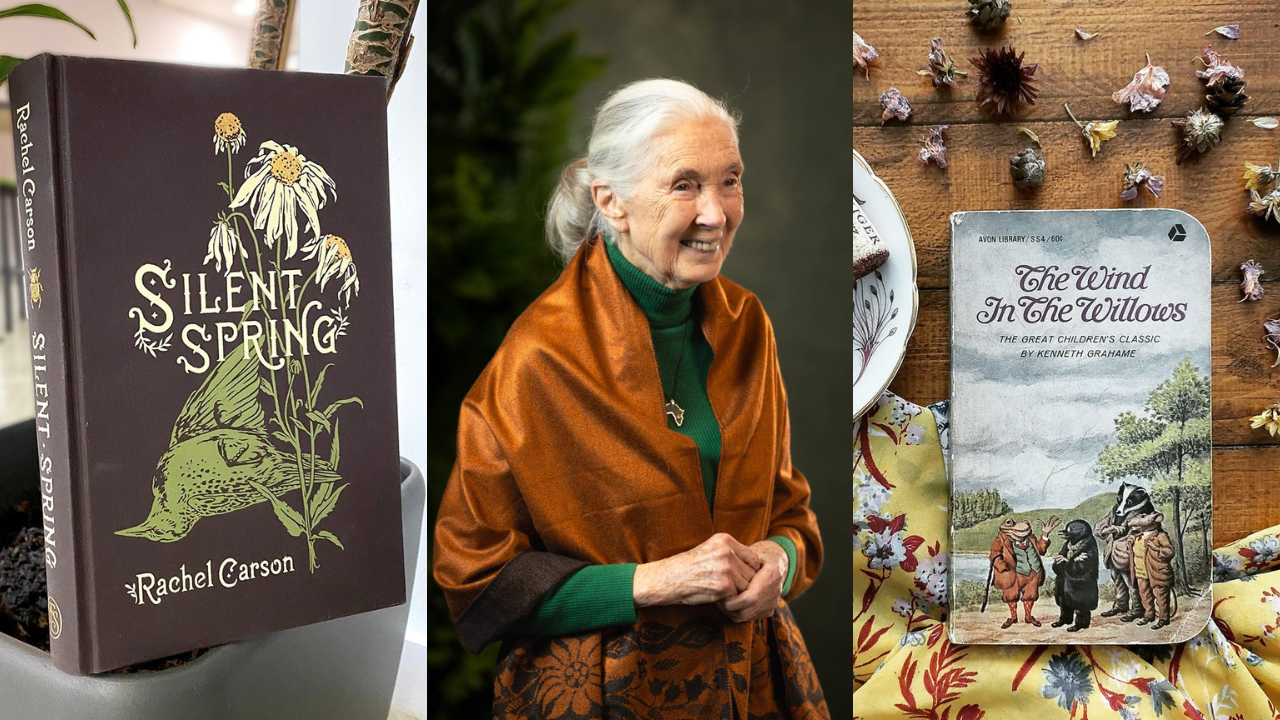
Books That Shaped Jane Goodall’s View of Nature, Science, and the Human Spirit (Picture Credit – Instagram)
When a pioneering mind like Jane Goodall shares her favourite books, the list is more than a reflection of personal taste—it’s a roadmap to the development of a legacy. From childhood stories that stirred her imagination to scientific works that inspired activism, these books show the heartbeat of a woman who reshaped how we see animals, our planet, and ourselves. Every title here has echoed through her life and work, helping her shape a message of empathy, curiosity, and hope.
1. The Bible
Jane Goodall found strength and solace in ‘The Bible’, which she read during her years in the Tanzanian forests. She was especially drawn to the teachings of Jesus, which shaped her views on compassion, forgiveness, and stewardship of the earth. For her, it was not about institutional religion but a personal faith that resonated deeply with her work in nature. This spiritual anchor helped her navigate loneliness and purpose while observing chimpanzees in the wild.
2. Pride and Prejudice by Jane Austen
‘Pride and Prejudice’ influenced Goodall’s sense of independence and wit. She admired Elizabeth Bennet’s strength of character, intellectual curiosity, and refusal to conform. The book’s social commentary, combined with sharp dialogue and emotional intelligence, made it a lifelong favourite. Goodall appreciated Austen’s ability to weave profound truths about human nature into seemingly light domestic drama. For her, this classic revealed the quiet power of women who resist convention through subtle courage and fierce self-respect.
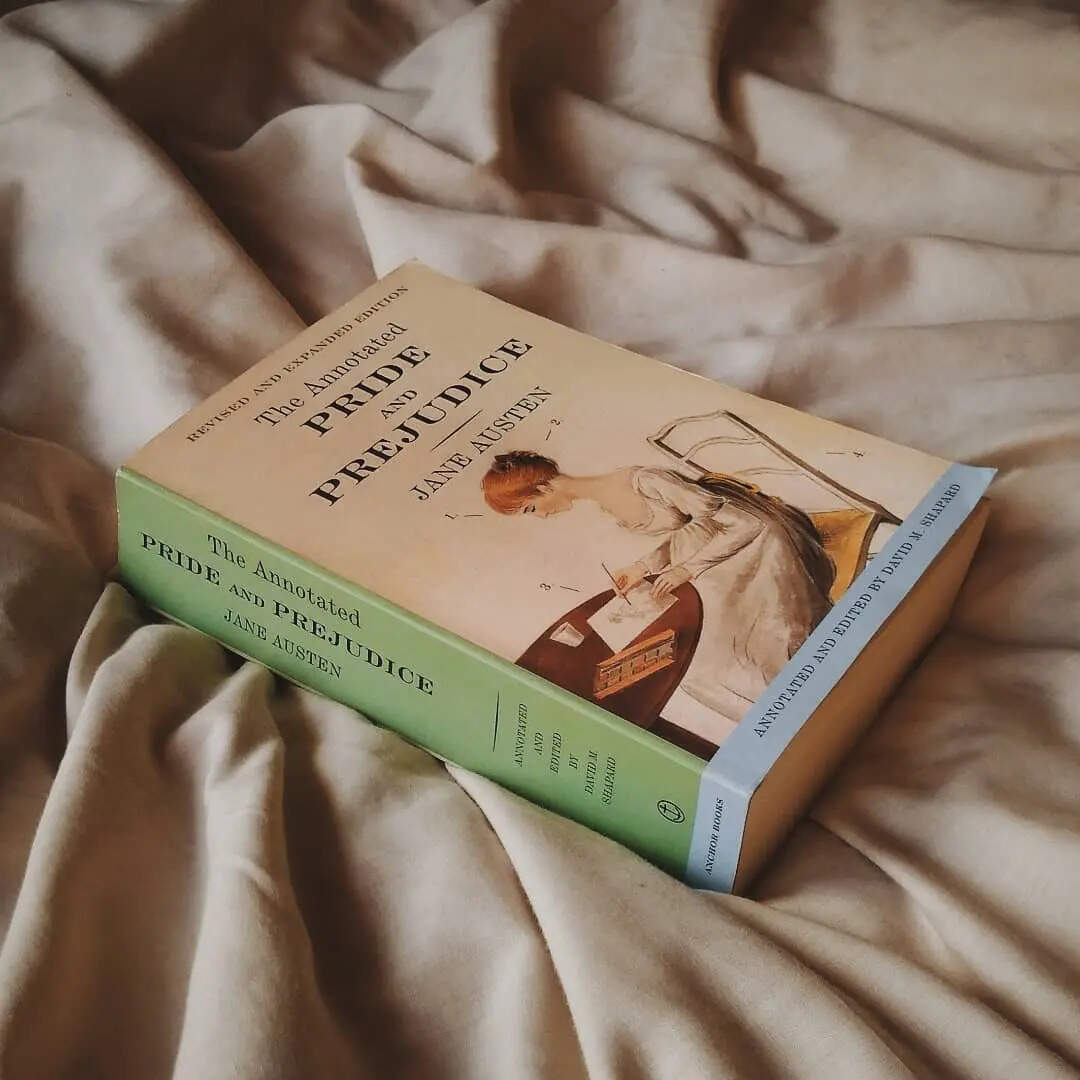 Pride and Prejudice (Picture Credit – Instagram)
Pride and Prejudice (Picture Credit – Instagram)
3. Tarzan of the Apes by Edgar Rice Burroughs
Reading ‘Tarzan of the Apes’ as a child sparked Goodall’s lifelong fascination with Africa. She famously said she wanted to grow up, go to Africa, live with wild animals, and write books about them—just like Tarzan. Though the book is now viewed through a more critical lens, its adventure and portrayal of the human-animal connection deeply influenced her early dreams. Goodall’s story would mirror that fantasy, but with a real-world, scientific devotion that changed how we see primates.
Goodall admired ‘Jane Eyre’ for its moral resolve and independence. Jane’s fierce sense of justice, her endurance in the face of hardship, and her insistence on staying true to herself inspired Goodall. The novel’s introspective narration and themes of spiritual and emotional resilience echoed in Goodall’s own inner world during her isolated years in the forest. It was a story of a woman choosing dignity over comfort—a theme that mirrored Goodall’s own solitary path in science.
Rachel Carson’s ‘Silent Spring’ had a profound impact on Goodall. It confirmed the urgency of speaking out for nature, even when facing industrial backlash. Carson’s calm, fact-based yet lyrical critique of pesticides opened a new door for environmental science. Goodall saw in Carson a role model: a scientist with a pen sharp enough to rattle power. The book reinforced her belief that science must have a moral compass and that one voice can challenge systems of destruction.
6. The Rime of the Ancient Mariner by Samuel Taylor Coleridge
Goodall was captivated by ‘The Rime of the Ancient Mariner’, especially its reverence for all living creatures. The poem’s central lesson—that harm against nature brings spiritual ruin—resonated with her ecological philosophy. Its haunting imagery and the Mariner’s remorse struck a deep chord. She often referenced the poem’s message as a warning against environmental arrogance. Coleridge’s work served as a lyrical reminder that awe and respect for nature are not only poetic ideals but necessary ethics.
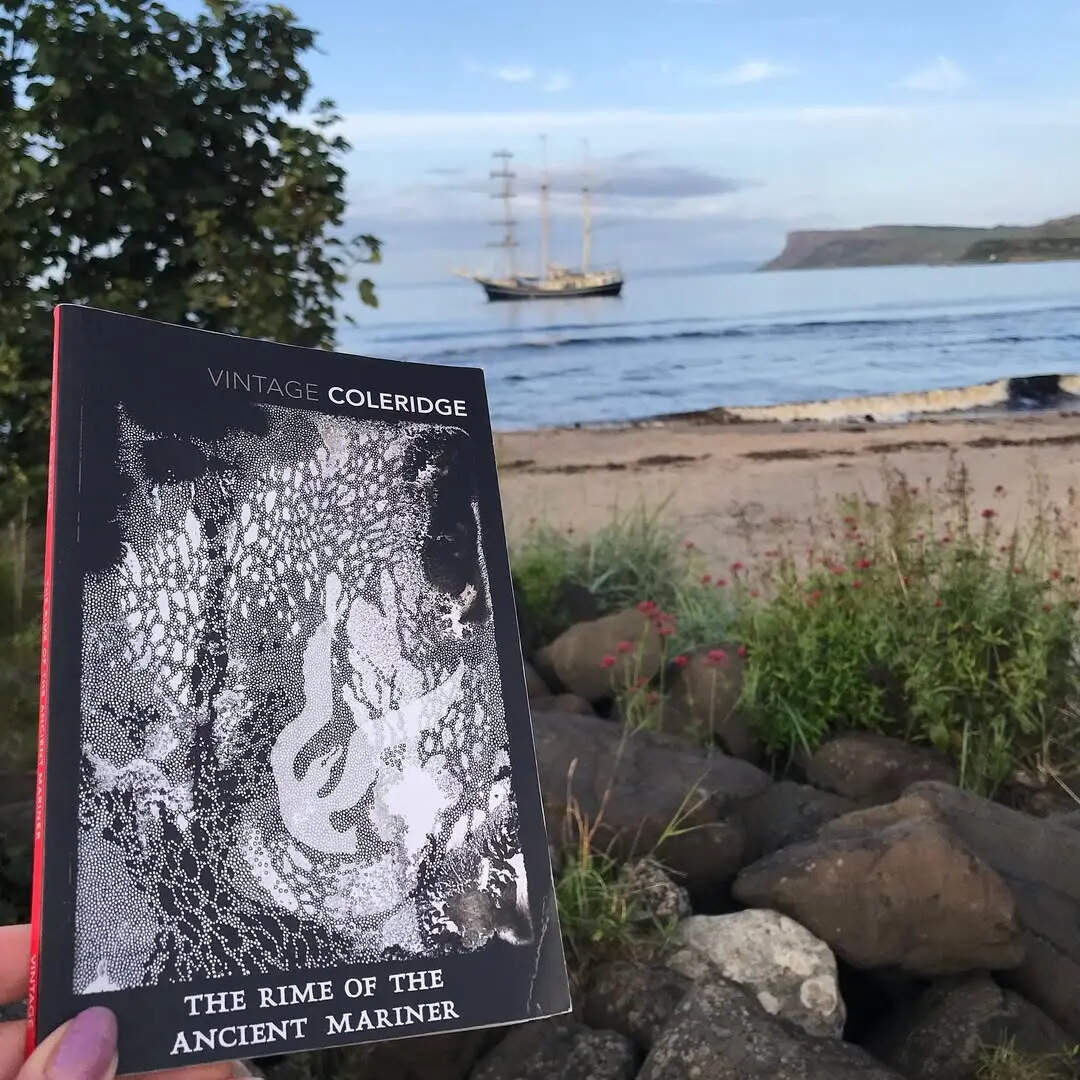 The Rime of the Ancient Mariner (Picture Credit – Instagram)
The Rime of the Ancient Mariner (Picture Credit – Instagram)
7. The Essential Collection by Charles Dickens
Goodall admired Dickens not just for his storytelling but for his fierce empathy for the marginalised. ‘The Essential Collection’ offered her a panoramic view of Victorian injustice and the resilience of the human spirit. She was drawn to his characters who suffered but maintained dignity, mirroring her own concern for animals and displaced communities. Dickens, like Goodall, made the unseen visible. His writing was her early lesson in using narrative to advocate for those without a voice.
8. One Pair of Hands by Monica Dickens
Monica Dickens’ ‘One Pair of Hands’ struck Goodall with its mix of humour and humility. It chronicles Dickens’ time working as a domestic servant, revealing class divides with sharp wit. Goodall appreciated the honesty and down-to-earth tone. It reminded her of the dignity in all forms of work and the importance of observing life without judgment. This memoir encouraged her to see value in everyday stories and affirmed that empathy could be built from the ground up.
9. The Wind in the Willows by Kenneth Grahame
Grahame’s ‘The Wind in the Willows’ remained a comforting presence throughout Goodall’s life. Its gentle woodland setting and its anthropomorphic characters fostered her early sense of kinship with animals. She particularly cherished the quiet strength of Badger and the loyalty of Mole and Rat. The book created a bridge between childhood imagination and adult reverence for nature. For Goodall, it represented a world where animals were more than background—they were wise, emotional beings worth listening to.
Goodall was deeply moved by ‘The Complete Poems’ of Thomas Hardy, especially his verses that mourn humanity’s disconnection from nature. She resonated with his melancholy tone and quiet reverence for the natural world. His poems gave language to the unspoken grief she often felt observing environmental destruction. Hardy’s work helped her articulate the emotional side of conservation, showing that science and sorrow could coexist. For Goodall, Hardy’s verses served as both elegy and inspiration.
11. All Creatures Great and Small by James Herriot
James Herriot’s ‘All Creatures Great and Small’ was both comfort and confirmation for Goodall. The veterinarian’s tales of rural life, animal care, and gentle humour reinforced her belief in the interconnectedness of life. She admired Herriot’s deep compassion for animals and his respect for their unique personalities. The stories reminded her of her own bonds with chimpanzees and the moral imperative to treat all beings with kindness. Herriot’s world was one where empathy triumphed, page after page.
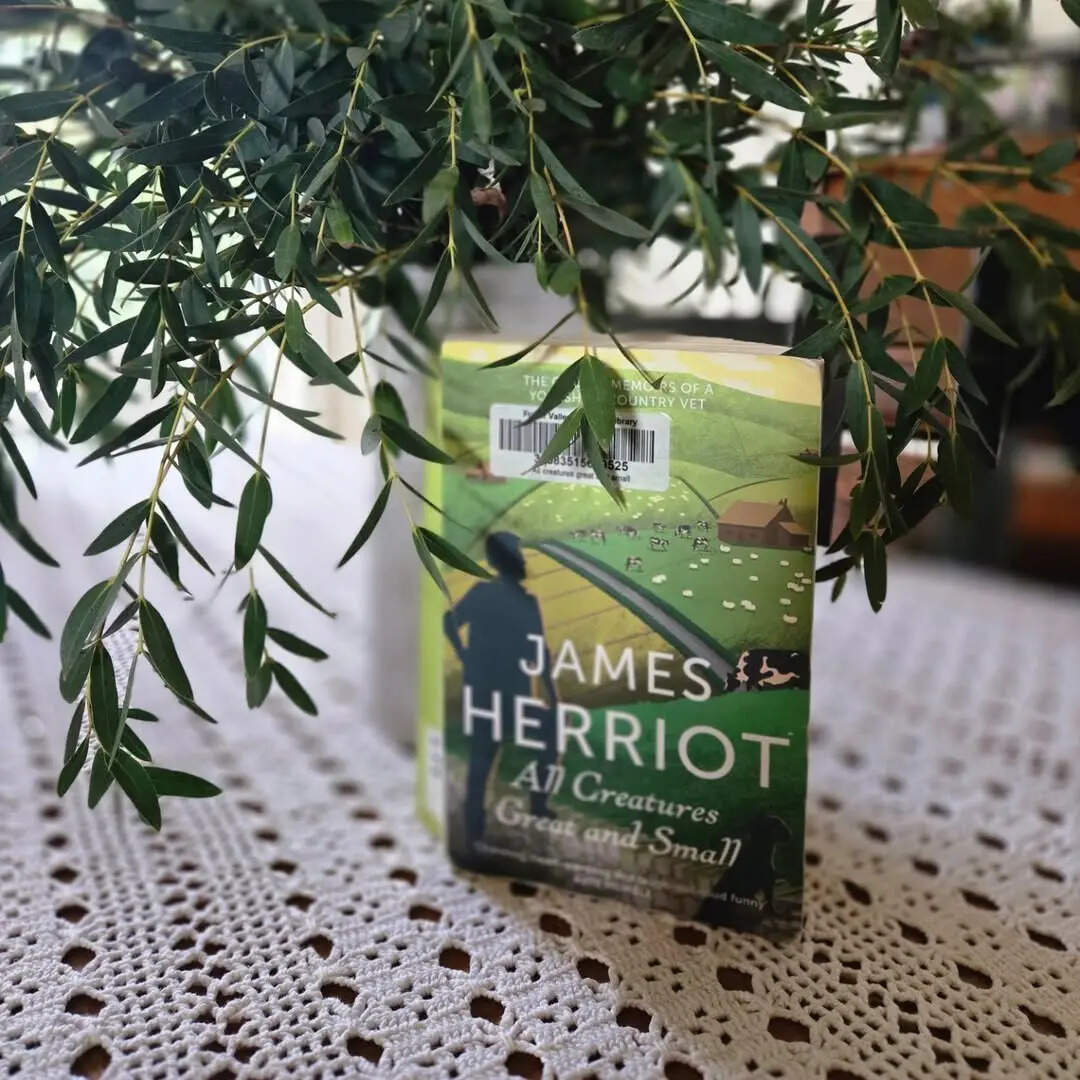 All Creatures Great and Small (Picture Credit – Instagram)
All Creatures Great and Small (Picture Credit – Instagram)
12. Someone Knows My Name by Lawrence Hill
Goodall praised Lawrence Hill’s ‘Someone Knows My Name’ for its emotional depth and historical weight. Following the life of an African girl sold into slavery, the novel explores identity, resilience, and human dignity. Goodall found its narrative both heartbreaking and hopeful. She admired the way Hill gave voice to those history tried to erase. For her, the story underscored the vital importance of memory and truth, key themes that also shaped her activism for animals and humans alike.
13. Etre the Cow by Sean Kenniff
Sean Kenniff’s novel ‘Etre the Cow’ presented a haunting meditation on sentience and suffering through the perspective of a cow. Goodall found it quietly devastating. It captured what she often tried to express in her advocacy: animals think, feel, and deserve moral consideration. The novel’s simplicity only heightened its impact. She valued how it made readers uncomfortable in the right way, forcing them to reckon with the cost of ignorance. Etre’s voice, imagined but sincere, lingered with her.
14. The Story of Dr. Dolittle by Hugh Lofting
As a child, Goodall adored ‘The Story of Dr. Dolittle’. The fantasy of speaking with animals mirrored her own yearning to connect with them on their terms. Though later viewed critically for its colonial overtones, the book’s core idea—that animals have voices worth hearing—inspired her lifelong mission. Dolittle’s empathy and curiosity became Goodall’s earliest template for understanding the natural world. Fiction sparked a real-world pursuit, one grounded in science but driven by imagination and respect.
Goodall turned to ‘The Complete Works of William Shakespeare’ for its depth of human insight. She found his explorations of power, betrayal, love, and fate remarkably relevant to human behaviour in society and in the animal world. Shakespeare’s language gave her metaphors for complex emotions and relationships. His understanding of ambition and moral struggle informed her thinking on humanity’s role in nature. For Goodall, Shakespeare wasn’t distant literature—he was a mirror reflecting both beauty and folly.
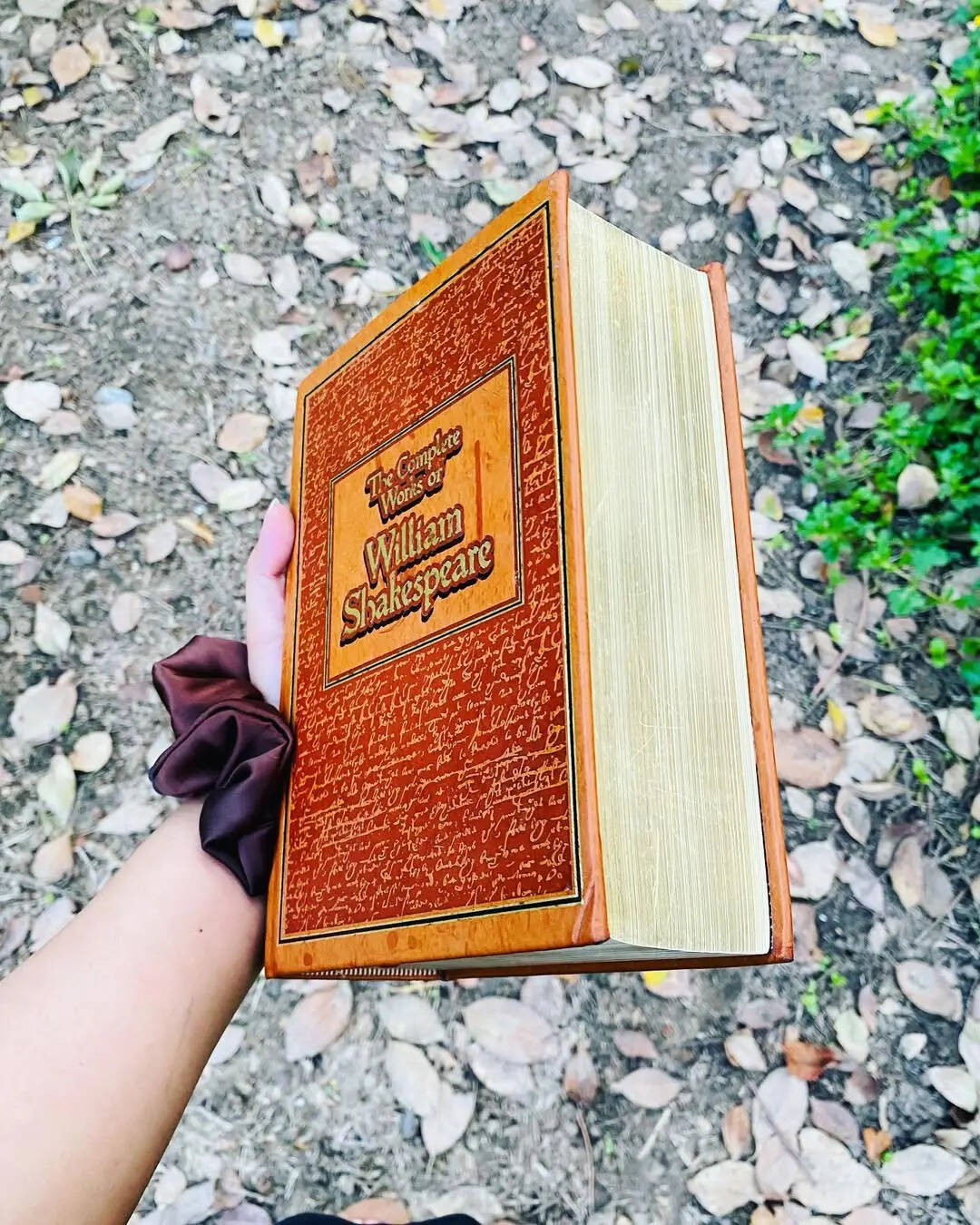 The Complete Works of William Shakespeare (Picture Credit – Instagram)
The Complete Works of William Shakespeare (Picture Credit – Instagram)
16. Animal Liberation by Peter Singer
Goodall credited Peter Singer’s ‘Animal Liberation’ with bringing philosophical rigour to the animal rights movement. It framed the ethical debate in accessible but challenging terms. For Goodall, Singer’s arguments provided intellectual grounding for the empathy she’d always felt. The book’s clarity helped her reach new audiences who needed logic alongside compassion. It pushed her to speak more forcefully against cruelty and to advocate for systemic change. Singer’s work amplified her message and gave it sharper tools.
17. The No. 1 Ladies’ Detective Agency by Alexander McCall Smith
Goodall loved ‘The No. 1 Ladies’ Detective Agency’ for its warmth, wit, and deep respect for Botswana’s culture. She found comfort in the wisdom of Mma Ramotswe, whose quiet determination and gentle intuition reflected qualities Goodall admired. The novel celebrated kindness, observation, and patience—values that mirrored her approach to research and activism. Beyond mystery, the book painted a portrait of African life that was nuanced and affectionate. Goodall cherished its calm celebration of everyday moral choices.
18. The Lord of the Rings by J.R.R. Tolkien
Tolkien’s epic ‘The Lord of the Rings’ spoke to Goodall’s sense of mission and wonder. She saw parallels between Frodo’s journey and her own commitment to protect life against overwhelming odds. The novel’s reverence for nature, its elegy for fading wilderness, and its insistence on small acts of courage deeply moved her. Tolkien’s Middle-earth felt like a warning and a hope. Goodall saw in his fantasy a reflection of Earth’s own struggle and the power of perseverance.
19. The Chimps of Fauna Sanctuary by Andrew Westoll
Goodall praised ‘The Chimps of Fauna Sanctuary’ for its compassionate portrayal of rescued lab chimpanzees. Westoll’s immersive account of the animals’ trauma and healing process reaffirmed everything she had witnessed firsthand. She valued the book’s honesty and refusal to sentimentalise. It exposed the emotional scars of captivity and the slow, delicate work of trust-building. For Goodall, this was more than reportage—it was a moral document that called for respect, restitution, and radical empathy for our closest relatives.
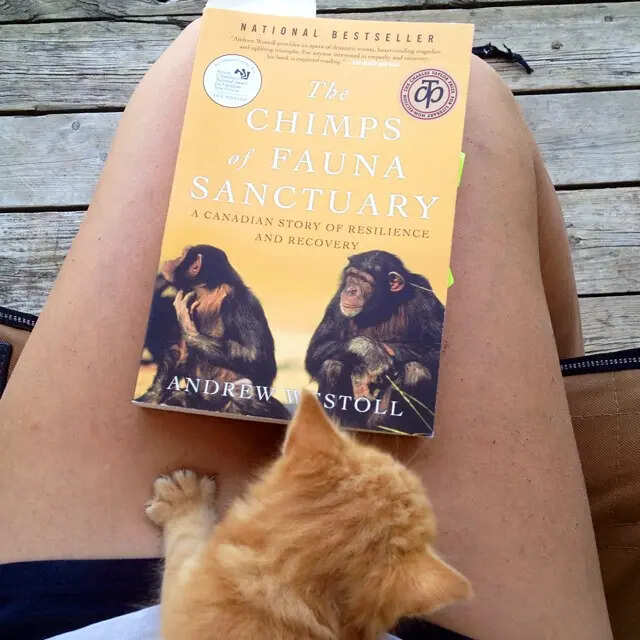 The Chimps of Fauna Sanctuary (Picture Credit – Instagram)
The Chimps of Fauna Sanctuary (Picture Credit – Instagram)
20. The Miracle of Life by Harold Wheeler
‘The Miracle of Life’ offered Goodall a sense of awe about biological complexity. The book’s detailed explanations and visual depictions of human development inspired her scientific curiosity. It was among the early texts that nurtured her fascination with life sciences. Goodall appreciated its clarity and sense of wonder, which stayed with her even as her studies grew more complex. It helped shape her belief that science could be both rigorous and poetic—a belief that defined her career.
Jane Goodall’s favourite books are more than reading material—they’re milestones in a lifelong journey of wonder, courage, and compassion. Spanning scripture, poetry, fiction, and science, this collection reflects a soul attuned to both nature’s intricacies and humanity’s responsibilities. These titles shaped her voice as an advocate for the planet.